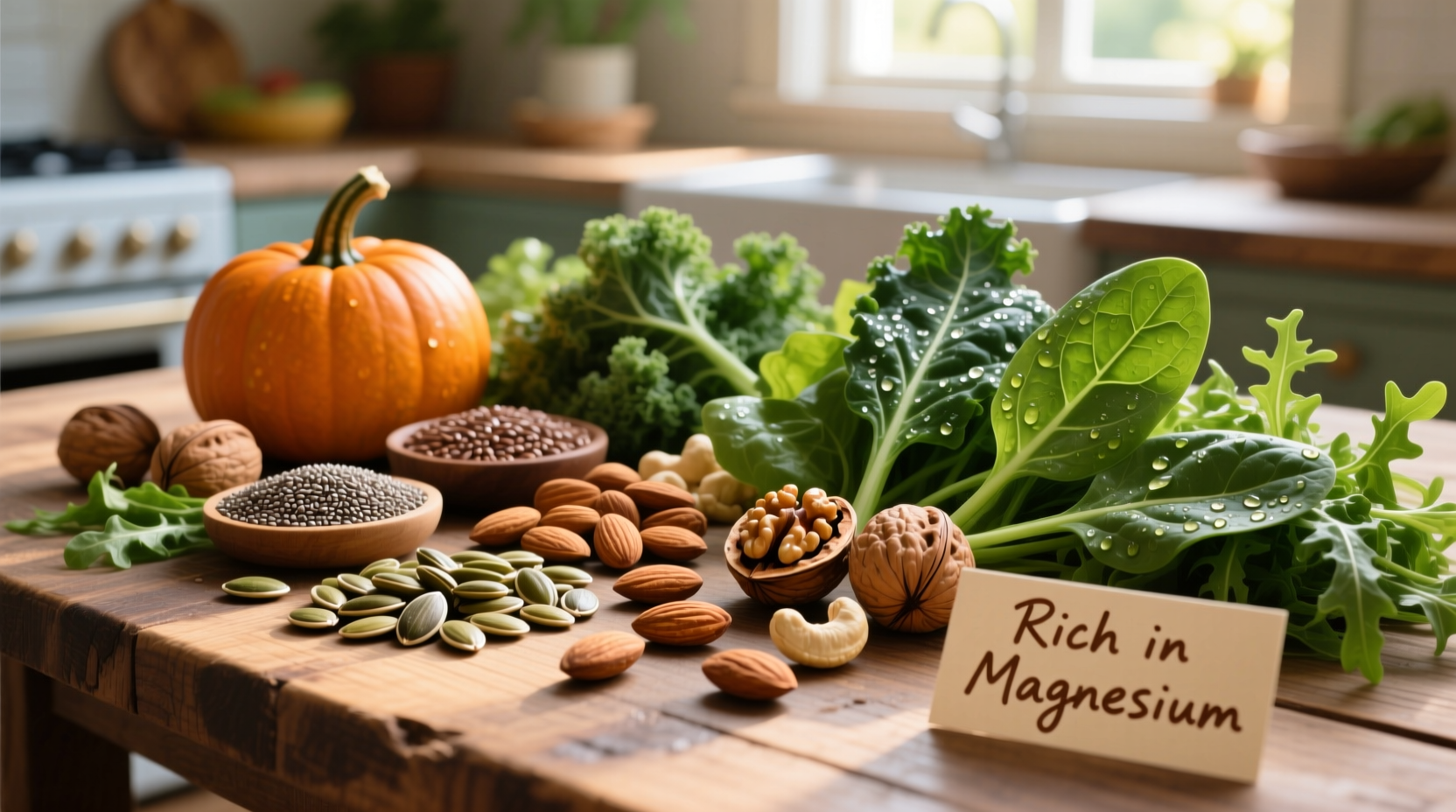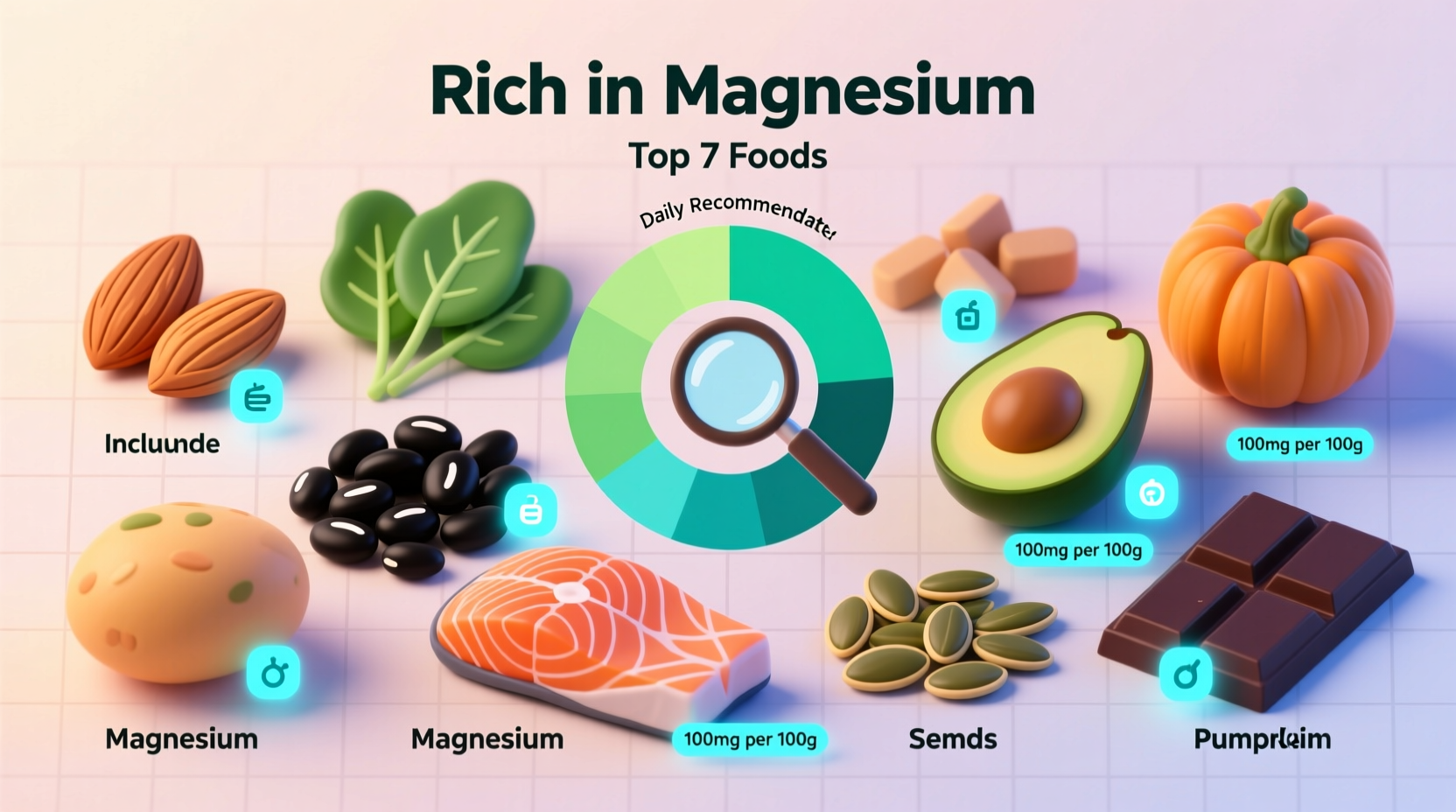Why Magnesium Matters More Than You Think
While calcium and vitamin D dominate nutrition conversations, magnesium operates quietly behind the scenes as a cofactor in over 300 enzymatic reactions. According to the National Institutes of Health, this mineral regulates blood pressure, supports immune function, and maintains heart rhythm stability. Yet nearly half of Americans fail to meet daily requirements, creating what researchers call a "silent epidemic" of suboptimal magnesium status.
Your Magnesium Food Roadmap
Navigating magnesium sources becomes straightforward when organized by food categories. Unlike supplements, whole food sources deliver magnesium alongside complementary nutrients that enhance absorption and utilization.
Seed Powerhouses: Nature's Concentrated Source
Pumpkin and chia seeds dominate the magnesium landscape. Just one ounce of pumpkin seeds provides 37% of your daily value, while chia seeds deliver 29%. The USDA FoodData Central confirms these seeds maintain their mineral density whether raw or roasted. Incorporate them into morning smoothies or sprinkle over salads for maximum benefit without altering flavor profiles significantly.
Nuts: Portable Magnesium Boosters
Almonds and cashews offer convenient magnesium delivery. A small handful (28g) of almonds contains 80mg magnesium plus vitamin E and healthy fats. Cashews provide 74mg per ounce with higher iron content. These make ideal between-meal snacks that combat afternoon energy crashes while supporting nerve function.
| Food | Serving Size | Magnesium (mg) | % Daily Value |
|---|---|---|---|
| Pumpkin seeds | 1 oz (28g) | 156 | 37% |
| Chia seeds | 1 oz (28g) | 95 | 23% |
| Almonds | 1 oz (23 nuts) | 80 | 19% |
| Cooked spinach | 1/2 cup | 78 | 19% |
| Black beans | 1/2 cup | 60 | 14% |
| Avocado | 1 medium | 58 | 14% |

Leafy Greens: The Underrated Magnesium Source
Spinach and Swiss chard deliver magnesium with vitamin K and folate. Cooking increases magnesium bioavailability by breaking down cell walls—steaming spinach boosts absorption by 25% compared to raw consumption. The Mayo Clinic notes that one cup of cooked spinach contains nearly twice the magnesium of the same volume raw.
Legumes and Whole Grains: Sustained Energy Providers
Black beans, edamame, and quinoa form the foundation of magnesium-rich meals. These foods provide sustained energy release while delivering 10-15% of daily magnesium needs per serving. Whole grains like brown rice and oats contain phytates that can inhibit absorption, so pairing them with vitamin C-rich foods like bell peppers enhances magnesium uptake by 30%.
Practical Integration Strategies
Maximize your magnesium intake with these evidence-based approaches:
- Seed rotation: Alternate between pumpkin, chia, and flax seeds to prevent palate fatigue while maintaining consistent intake
- Cooking method matters: Steam leafy greens rather than boiling to preserve water-soluble magnesium
- Pairing principle: Combine magnesium-rich foods with vitamin B6 sources (bananas, potatoes) to enhance cellular absorption
- Timing tip: Consume magnesium-rich foods with dinner to support muscle relaxation and improve sleep quality
Contextual Considerations: Who Needs More?
Certain populations require increased magnesium attention. Athletes lose 10-15% more magnesium through sweat, while older adults experience reduced intestinal absorption. The NIH reports that type 2 diabetics often have lower magnesium levels due to increased urinary excretion. Pregnant women need 40mg more daily to support fetal development. However, those with kidney disease should consult physicians before increasing dietary magnesium, as impaired excretion can lead to dangerous accumulation.
Building Your Magnesium-Rich Plate
Create balanced meals by combining magnesium sources across categories. A sample day might include:
- Breakfast: Chia pudding made with almond milk topped with pumpkin seeds
- Lunch: Spinach salad with black beans, avocado, and almonds
- Dinner: Quinoa bowl with roasted Swiss chard and cashews
This approach delivers over 500mg of magnesium—meeting 120% of daily requirements for most adults—while providing complementary nutrients that enhance overall absorption and utilization.











 浙公网安备
33010002000092号
浙公网安备
33010002000092号 浙B2-20120091-4
浙B2-20120091-4